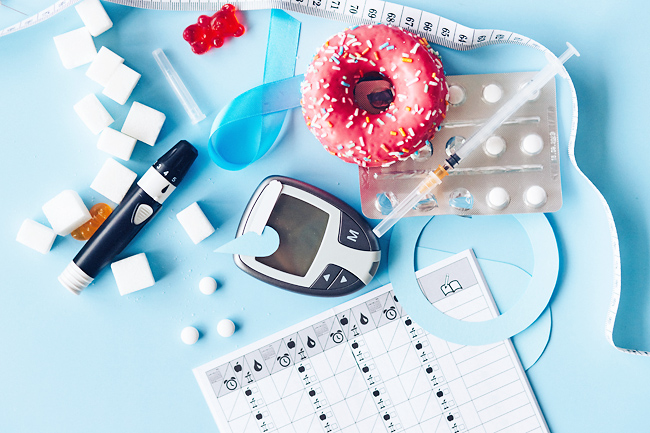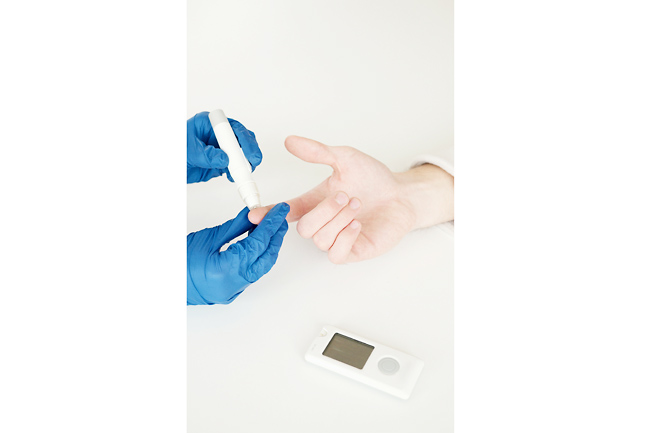CNA – Your body is constantly giving you feedback. But oftentimes, you choose not to listen because you’re too busy or you just aren’t ready to face the music.
Take, for instance, how you may interpret fatigue, weight loss, blurred vision, and excessive thirst and urination.
You might brush off the constant tiredness as the effects of taking on extra duties at work or an increased workload in the office.
You’re probably stressed and not eating or hydrating well, hence the weight loss.
The thirst you’re feeling is just your body’s sign that you’re dehydrated, right? As for the blurry vision you’ve been experiencing – too much staring at the laptop screen, you surmise.
But hold up. There is also a possibility that those very signs you’ve been dealing with could be Type 2 diabetes knocking on your door. And the odds are not in your favour.
Nevertheless, there is room for improvement. Dr Leong Choon Kit, a family physician at Mission Medical Clinic, said that about one in 10 patients he screens in his clinic has Type 2 diabetes.


WHAT ARE THE SIGNS YOU MAY HAVE DIABETES?
Insulin problems are the root of diabetes. This hormone is produced in the pancreas to help your body use the blood sugar derived from the food you eat for energy.
But in those with diabetes, the insulin produced is not sufficient or their body’s cells do not respond to the insulin.
“As we gain more weight, our cells become more and more resistant to the effects of insulin. And unfortunately, insulin resistance is the first key step in developing Type 2 diabetes,” said endocrinologist Dr Shirisha Avadhanula on Cleveland Clinic’s website.
Here’s a look at why insulin issues can lead to these common signs associated with Type 2 diabetes:
Excessive thirst and urination: When there is a high level of sugar in your blood, the kidneys have to work overtime to filter it, thus increasing urine production, said Dr Leong.
The excess sugar will also pull other fluids along with it, leaving you dehydrated. To compensate, your body uses thirst to urge you to rehydrate.
Fatigue: When there isn’t enough insulin or the insulin is ineffective, the blood sugar cannot enter the cells and be utilised as energy. As a result, patients can experience fatigue.
Dehydration from increased urination can also result in fatigue. Many patients with Type 2 diabetes also have obstructive sleep apnoea, which can contribute to the fatigue.
Weight loss: As a diabetic’s body is unable to utilise blood sugar for energy, it turns to other sources of fuel instead: Fat and muscles. This, together with the loss of excess blood sugar in the urine, results in weight and calorie losses.
Blurred vision: A high level of blood sugar is toxic to many organs, including the retinas by damaging the blood vessels, said Dr Leong. When this happens, the swollen and leaking blood vessels can cause blurry vision or even stop blood flow to the retinas.
Not only that, the excess blood sugar can also swell the lenses in the eyes. Diabetes can also be associated with cataracts, all of which can cause the blurring of vision.
Slow-healing sores or frequent infections: A high blood sugar environment is a good medium for bacteria to grow, said Dr Leong. It can also slow down the body’s immune system and create scenarios that favour infections.
In addition, diabetics often suffer from poor blood circulation, which makes it harder for blood, “which is needed for skin repair, to reach areas of the body affected by wounds”.
Wounds that are unhealed have a higher risk of fungal and bacterial infection. If not treated promptly, the risk of amputation can be increased.
TAKE THE SIGNS SERIOUSLY
It is not uncommon for many people to miss the red flags. In fact, there may be some who aren’t aware of the phase known as prediabetes.
“Before people develop Type 2 diabetes, almost all of them pass through the stage of prediabetes, where their blood glucose levels are higher than normal but not high enough to be considered as frank or overt diabetes,” said senior consultant with Singapore General Hospital’s Department of Endocrinology Dr Goh Su Yen on Healthub.
In prediabetes, the symptoms are the same as Type 2 diabetes but “milder”, said Dr Leong.
In fact, the symptoms may be so subtle that they are hard to tell, they may mimic other conditions or patients do not experience any signs at all, according to the doctors.
This is why it is important to view the symptoms “seriously” and “seek proper medical advice and treatment”, said Dr Leong. “Never assume it is something mild or normal.”
The best course of action especially for high-risk individuals – is to test their blood sugar levels regularly.
This refers to those who are 40 years and older, and have a body mass index of 23 and above, an inactive lifestyle, high blood pressure and cholesterol level, a strong family history of diabetes and/or a history of gestational diabetes mellitus.
PREDIABETES CAN BE REVERSED BUT…
Prediabetes can be halted from progressing to full-blown Type 2 diabetes. But even so, the success rate is “50-50”.
The diagnosis of prediabetes serves as an alarm bell in some patients and they are able to change their eating habits as well as start to exercise and lose weight, all of which help in the reversal of the condition. However, there are many who are unable to change their lifestyles, with the unfortunate progression to diabetes mellitus.
Late diagnosis is another stumbling block, said Dr Leong. “Unfortunately, in Singapore, most of our patients are diagnosed late.
“Most of them have mild forms of damage to their eyes or kidneys. The moderate ones often come with high blood pressure and high cholesterol as well.”
By the time the patient is symptomatic, it is possible that complications to the eye, nerves and kidneys etc have already started.
Organ damage is certainly no light matter. “Once organ damage sets in, even if it is mild, most times, it will deteriorate over time,” said Dr Leong.
“The best scenario is that the patient keeps the damage to a minimum with the help of their general practitioner, dietitian, nurse and optometrist.”
The adage, prevention is better than cure, definitely applies to Type 2 diabetes – especially when it’s at the prediabetes stage (although we need to qualify that there is no cure for prediabetes and diabetes).
This is because you can still bring down your blood sugar levels to within the normal range with healthy lifestyle changes.
And the key to that is weight loss.
In fact, research shows that you can reduce your risk of developing Type 2 diabetes by as much as 58 per cent when you lose five per cent to seven per cent of your body weight.
The way to a lighter and diabetes-free you is no magical formula really. It is the same advice you’ve been hearing: Exercise more (at least 150 minutes of moderate aerobic exercise per week); eat healthier (more wholegrains and fresh fruits and vegetables); quit processed carbs, refined sugar, alcohol and smoking; and get enough sleep every night.
However, despite your best efforts to bring down your blood sugar levels, your body may not be in your corner sometimes.
“A lot depends on the remaining pancreatic function,” said Dr Leong. “If the pancreas is very aged and failing, it is unlikely to be reversed.”
Dr Leong also cautioned that “even when the sugar level seems to have returned to normal, it is important to remember that often, it will return a number of years later”.
“This is because much of it is dependent on the genetic factors of the patient,” he said.






